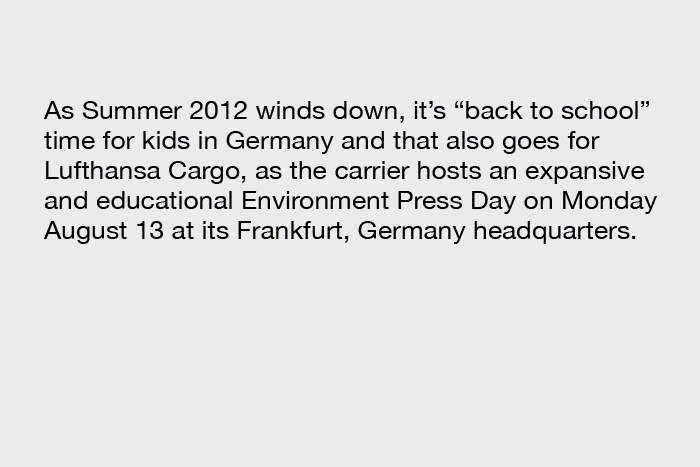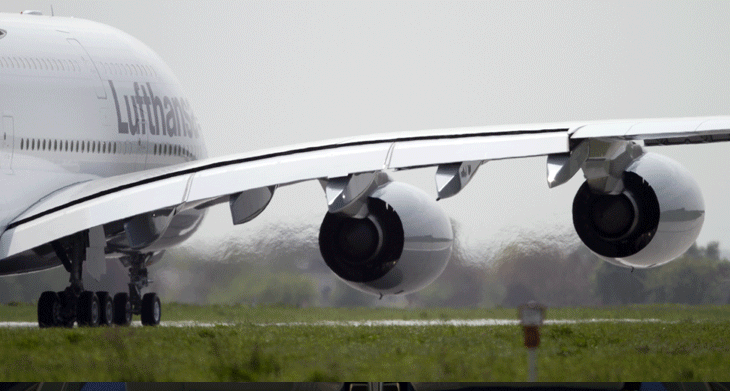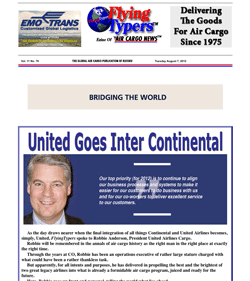| 
 HACTL
says air freight performance
is indicative of the global
economy, but the long-term future
is coming up roses. HACTL
says air freight performance
is indicative of the global
economy, but the long-term future
is coming up roses.
FlyingTypers
recently had the pleasure of
chatting to Lillian Chan, Executive
Director of Hong Kong Air Cargo
Terminals (HACTL), just after
HKIA’s largest handler
released its half-yearly tonnage
figures.
Given
that HACTL handles around 80
percent of the cargo received
at the world’s largest
cargo airport and meets the
needs of some 100 airlines,
she said the negligible growth
achieved in the first half of
the year was indicative of global
economic health.
“Airfreight
continues to be a barometer
for world trade, and the needle
has now swung back,” she
said.
“All
trade comes and goes in cycles,
and this is a down-cycle. It
will be followed by upswings
in the future.”
She
said that while exports had
shown some growth in the first
half of the year, different
markets had produced vastly
different results. “The
weak areas have been Europe
and the USA, which continue
to be our largest markets, but
happily other markets have counteracted
this,” she added.
“A
small surprise has been that
Europe’s weak Euro has
not boosted their exports.”
Imports
received from Europe contracted
by -13.3 percent year-over-year
in the first half of the year
and total imports fell by -7.8
percent, with lower Chinese
demand a major factor.
“There
is no question that the first
phase of China’s consumer
revolution has passed,”
she said. “Demand is still
strong, but was never likely
to continue at such a pace.”
The
fastest growth was evident in
the Middle East and South East
Asia, which saw export tonnage
increases of 10.4 percent and
13.4 percent year-over-year,
respectively. Imports followed
the same trend, with the Middle
East and South East Asia showing
increases of 27 percent and
12.1 percent respectively in
the first half of the year.
“Stronger
economies and increasingly-sophisticated
consumer tastes driven by increasing
disposable incomes are clearly
driving demand for typical airfreight
commodities [from these regions],”
said Chan.
“When
you look at the world’s
most successful airlines, many
are based in these regions—always
a sign of economic strength.”
Chan
remains positive about long-term
growth at HKIA. On that basis,
HACTL recently invested some
USD$31 million in COSAC-Plus,
its new bespoke cargo management
system. She said the system
would not only help improve
HACTL’s performance, but
also make its airline customers
more efficient and customer-friendly.
“It
is multilingual and comes with
a full web interface, online
help, and personalization capability,”
she said. “It
handles images for the first
time, and has comprehensive
cargo tracking features. Its
modular and open architectural
design facilitates e-Freight,
ease of customization, and integration
with airlines' own systems.”
Chan
also supports the construction
of a third runway at HKIA, which
she believes is critical to
HKIA maintaining its position
as a gateway for Mainland China
and a regional hub for Asia.
“It
is less a matter of what benefits
we will reap, and more a matter
of what is essential for the
future of Hong Kong,”
she explained.
“For
a major airport to be successful,
it must give airlines the infrastructure
and capacity to grow. If they
feel constrained through restricted
operating hours or slots, or
they get negative feedback from
passengers regarding terminal
congestion or flight delays,
they look for better alternatives.
“Unless
Hong Kong receives a third runway,
it will be unable to accommodate
airline growth. It will not
simply stand still. It will
lose its international hub status
to other airports in the region.
“The
impact on Hong Kong’s
economy and employment, and
on HACTL, would be dire.”
Although the completion of Hong
Kong Zhuhai Macao Bridge and
the Hong Kong Shenzen Western
Express in 2016 will further
improve connectivity with South
China and could give rival airports
access to HKIA’s core
customers, Chan said it was
more likely that HKIA would
emerge the winner from any cargo
scramble.
“Where
are airlines more likely to
place their services in the
future?” she asked. “Because
of its location, range of destinations
served, regional hub status,
interline opportunities and
English language we think they’ll
go to Hong Kong.
“Any
improvement in communications
with Hong Kong’s hinterland
can only be good for the airport
and HACTL.”
To
that end, HACTL has been improving
its services offered via Hacis,
its added-value logistics subsidiary,
which operates daily express
road feeders to and from IATA-designated
Inland Cargo Depots at six key
locations throughout the highly-industrialized
Pearl River Delta and Fujian
Province regions.
“This
enables carriers to add six
destinations to their tariffs
and so make better use of their
capacity to and from Hong Kong,”
she added.
SkyKing
|





 Looking
at these actors re-enacting
Rembrandt’s “Nightwatch”
painting at a soccer match in
2005, we are reminded that unlike
air cargo, ocean shipping has
enjoyed special protection to
set rates for quite a long time.
Looking
at these actors re-enacting
Rembrandt’s “Nightwatch”
painting at a soccer match in
2005, we are reminded that unlike
air cargo, ocean shipping has
enjoyed special protection to
set rates for quite a long time.

 HACTL
says air freight performance
is indicative of the global
economy, but the long-term future
is coming up roses.
HACTL
says air freight performance
is indicative of the global
economy, but the long-term future
is coming up roses. 

 RE:
RE:


